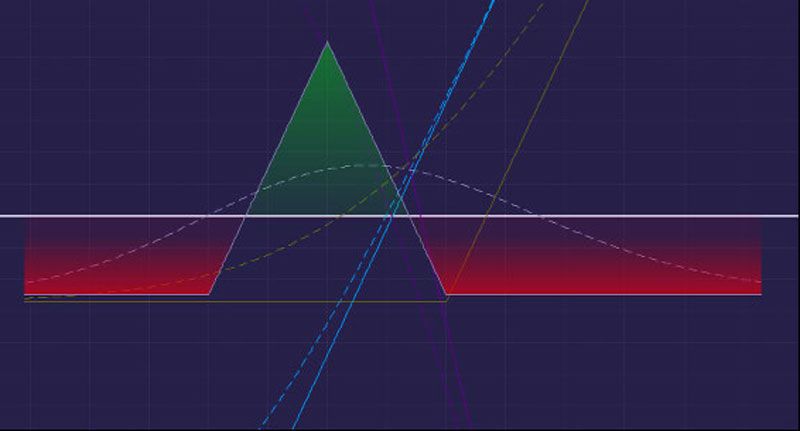In the realm of finance, options trading stands as a versatile avenue for investors seeking strategic leverage and risk management. Amid the complexities of this domain, options calculators emerge as indispensable tools, empowering traders to assess, strategize, and optimize their options positions. This comprehensive guide dives into the intricacies of options calculators, unveiling their significance, functionality, and practical applications in the dynamic world of trading.
Understanding Options Trading:
Before delving into the nuances of options calculators, it’s pivotal to comprehend the essence of options trading. An option is a financial derivative that grants the holder the right, but not the obligation, to buy or sell an underlying asset at a predetermined price (the strike price) within a specified timeframe. Broadly categorized into calls and puts:
- Call Option: Provides the holder the right to buy the asset at the strike price within the expiration period.
- Put Option: Offers the holder the right to sell the asset at the strike price within the expiration period.
Navigating options involves considering various factors such as market volatility, time decay, underlying asset price movements, and expiration dates, each affecting the option’s value. This complexity underscores the need for tools that can efficiently evaluate these multifaceted dynamics, and that’s where options calculators come into play.
Unveiling Options Calculators:
An options calculator serves as a powerful instrument, employing mathematical models and algorithms to estimate the potential outcomes of options positions based on user-inputted variables. These calculators are designed to assist traders in analyzing and comprehending the potential risks, profits, and losses associated with their options strategies.
Components of an Options Calculator:
- Underlying Asset Information: Details about the asset being traded, encompassing its current price, ticker symbol, dividends, or interest rates, are crucial inputs.
- Option Parameters: Users input the type of option (call or put), the strike price, and the expiration date, shaping the foundation of the calculation.
- Volatility Estimation: Implied volatility, a significant determinant of option prices, is incorporated into these calculators to gauge potential fluctuations.
- Interest Rates: The risk-free interest rate is a vital element in options pricing models, influencing the calculated values.
Types of Options Calculators:
- Black-Scholes Calculator: A widely utilized model that estimates the theoretical price of European-style options, factoring in variables like underlying price, volatility, time to expiration, and interest rates.
- Binomial Options Calculator: Employing a discrete approach, this model evaluates multiple possible price movements over time intervals, offering a different perspective on options pricing.
- Monte Carlo Options Calculator: Utilizing random simulations of future prices for the underlying asset, this method estimates option prices based on a multitude of simulated scenarios.
Functions and Benefits:
- Price Estimation: Options calculators provide estimated option prices, aiding traders in understanding potential profits or losses in different scenarios.
- Risk Assessment: Displaying various profit and loss scenarios, these calculators enable traders to assess and manage risks effectively.
- Strategy Optimization: By allowing users to tweak input variables, options calculators facilitate the simulation of different strategies, helping traders optimize their plans.
- Implied Volatility Insights: Some calculators offer insights into implied volatility, aiding traders in understanding market expectations.
Real-World Application:
Consider an investor evaluating a call option on a tech company’s stock. By utilizing an options calculator, they can input current stock prices, the chosen strike price, expiration date, and anticipated volatility to gauge potential profitability and risks. The calculator’s flexibility allows users to explore various scenarios, empowering informed decision-making.
Limitations and Considerations:
- Assumption-based Models: Options calculators operate on models that might not always align with real market conditions, emphasizing the need for critical analysis beyond calculated values.
- Market Dynamics: Rapid changes in market conditions can impact option prices differently from what calculators predict, necessitating adaptability and real-time analysis.
- Varying Model Accuracy: Different calculators use distinct models, leading to varying degrees of accuracy in predictions.
Conclusion:
Options calculators serve as indispensable aids, empowering traders to navigate the complexities of options trading with precision and confidence. While these calculators provide valuable estimations, it’s essential for traders to amalgamate this information with market analysis and real-time data for informed decision-making.
In the dynamic and intricate landscape of finance, options calculators stand as pillars of support, enabling traders to unravel potential outcomes and make calculated moves within the world of options trading.

Reblog It collaborates closely with clients to develop tailored guest posting strategies that align with their unique goals and target audiences. Their commitment to delivering high-quality, niche-specific content ensures that each guest post not only meets but exceeds the expectations of both clients and the hosting platforms. Connect with us on social media for the latest updates on guest posting trends, outreach strategies, and digital marketing tips. For any types of guest posting services, contact us on reblogit.webmail[at]gmail.com.
